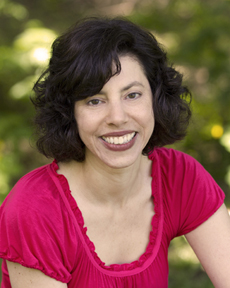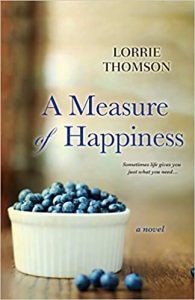Tools Of The Trade And Other Delights
 Tools of the Trade and other Delights
Tools of the Trade and other Delights
Some writers have virtual and literal filing cabinets full of story ideas. Sadly, I’m not one of those writers. I consider myself a serial monogamist. I give myself to one story at a time. No matter how many novels I’ve written, in between I spend/waste time fretting that I’ll never find another story idea. Then, after I tire of the melodrama, I sit down and actually do something to help eradicate my angst.
I open a blank document and I free write.
What subjects or events have caught my attention? What has affected me personally—and why? What do I keep hearing about that makes me care? If you don’t care, your reader won’t, either. I free write and I research.
When I first came across the idea that sparked my work-in-progress, I sat down at my computer and searched for articles. I soon found myself reacting to what I’d read. Feeling all the feels, gesticulating at the screen, and uttering phrases of astonishment. I knew I’d found the seed of my next story idea. And that I likely looked ridiculous.
But how do you know whether you can grow that seed into a novel?
After I’ve decided upon an inciting event—the event at or near the novel’s start that changes everything–I then look for the best point-of-view character(s) to tell the story. Who would this story affect the most and in the worst possible way? The answer lies in a character’s backstory, and the event or situation that left her with a lie she believes about herself and a way of interacting with the world that’s no longer useful. Have you ever heard the term chip on your shoulder? It refers to a person who carries a chip on her shoulder to show you what her house is made of.
Everything that happens externally is a story’s plot. But internal action is as important. Over the course of most commercial novels, the main character will slowly challenge and eventually overcomes the lie she tells herself, and she’ll let go of the ineffective way she deals with the world. This incremental internal change is called a character arc. The two, plot and character arc, are intertwined.
At this point, I may decide to write a really drafty draft of a one or two-paragraph mini-synopsis. This is the query you send to agents that becomes the pitch agents sent to publishers, that becomes the blurb that you find on the back of most novels. Check out the backs of your favorite novels. The blurb always describes who the story is about and the inciting incident. The blurb sometimes describes more of the novel’s plot in a way that entices without spoilers.
The blurb is a useful tool. If you can’t describe your novel in a blurb, you may need to go back to free writing and researching.
And now, finally, I’m ready to begin writing the actual novel.
No matter how many novels I’ve written, the first chapters are always the hardest for me. They’re the pages I’ll write over and over again. Because even though I’ve spent time musing and writing notes to myself about the characters and their backstories and the novel’s plot, the act of writing brings up details that I was previously unaware of. I get to know the characters better as I write them, much as a reader would as she reads. The first few chapters allow my brain to download the rest of the story, too. (Thank you, brain!) I’m now able to fine-tune the aforementioned blurb. And I prepare to write what some call the “dreaded” synopsis. Over the years I’ve learned to dread the synopsis less.
The synopsis is a useful tool that serves as a road map for my novels.
There are a lot of online synopsis-writing classes and workshops. That’s how I originally learned the craft. Nowadays, I’ve no need to refer to my old notes. I remind myself of the two-tier nature of a synopsis. A synopsis is not a chapter-by-chapter outline. Sure, a synopsis details the most important events that happen in the story. But the synopsis must also explain why they happen. The why goes back to your main character’s story arc and that chip on her shoulder that colors the way she interacts with the world.
If you’re not under contract, you can write to the end of your manuscript before going out on submission. This gives you the opportunity to tweak your pitch and revise your synopsis to more accurately reflect your completed manuscript. Because if you’re like me, your story hasn’t exactly followed your original synopsis. That road map was more of a suggestion than a mandate. Your subconscious mind took over and brought you on a journey that was different, and better, than your original intention.
And now you sit—or stand, if you have one of those desks—with a completed manuscript, an up-to-date synopsis, and a pitch/query/back cover blurb.
What’s next?
If you have an agent and she’s given your manuscript the green light, she begins querying publishers. If you don’t have an agent and you’d like one, you begin the querying process. You send out queries to agents who represent your genre. You walk in circles wondering when you’ll hear back. You neurotically refresh your email. (This likewise applies to agented writers waiting to hear back from their agents.) Then, after you tire of the melodrama, you go back to step one of the writing process.
You sit down. You open a blank document. And you free write your way to another great story idea.
—
A Measure of Happiness
 Katherine Lamontagne isn’t Celeste Barnes’s mother, but ever since Celeste graduated high school and her parents abandoned Hidden Harbor, Maine, she’s acted the part. At twenty-two, Celeste worked at Katherine’s bakery, and hoped to buy the business once Katherine took early retirement. But when Katherine reconsidered that decision, Celeste fled to culinary school in New York—only to return two months later, a shadow of the girl who’d stormed out the door.
Katherine Lamontagne isn’t Celeste Barnes’s mother, but ever since Celeste graduated high school and her parents abandoned Hidden Harbor, Maine, she’s acted the part. At twenty-two, Celeste worked at Katherine’s bakery, and hoped to buy the business once Katherine took early retirement. But when Katherine reconsidered that decision, Celeste fled to culinary school in New York—only to return two months later, a shadow of the girl who’d stormed out the door.
Katherine knows the signs of secret heartbreak. Years ago, she gave up her baby son for adoption—a regret she’s never shared with either her ex-husband or Celeste. She longs for Celeste to confide in her now. But it will be a stranger in town—an engaging young wanderer named Zach Fitzgerald—who spurs them toward healing. As both women are drawn into Zach’s questioning heart, they also rediscover their own appetites for truth and for love—and gain the courage to face the past without being imprisoned by it.
Uplifting, emotionally rich, and deeply satisfying, A Measure of Happiness illuminates the nature of friendship, motherhood, hope—and the gifts of second chances.
Buy the Book: Amazon, Apple Books, Barnes & Noble, Books-A-Million, Bookshop, IndieBound, Kensington Books, Powell’s, Toadstool Bookshops
Lorrie Thomson is the award-winning author of three novels from Kensington Books: A Measure of Happiness, What’s Left Behind, and Equilibrium. She lives in New Hampshire with her husband and their youngest offspring. When she’s not reading, writing, or hunting for collectibles, you can find her climbing indoor walls, hiking outdoor trails, and pedaling upon the seat of a bicycle built for two.
To learn more about Lorrie and her books, sign up for her newsletter, and arrange a book club chat, visit her website at www.lorriethomson.com.
Connect with Lorrie: www.twitter.com/LorrieThomson, www.facebook/lorriethomsonauthor,
www.goodreads.com/author/show/6880966.Lorrie_Thomson,
www.bookbub.com/authors/lorrie-thomson.com
Category: How To and Tips






























